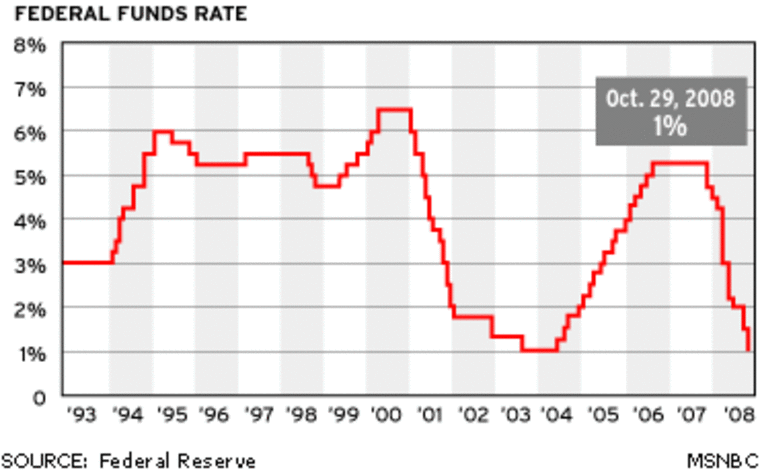In 16 years as Federal Reserve chairman, Alan Greenspan has grown legendary for his ability to calm jittery financial markets without disclosing much about his intentions. This week’s performance on Capitol Hill demonstrated why.
After two days of congressional testimony from the 78-year-old central bank chief, Greenspan got across the message that interest rates will have to rise — but offered little additional clarity on when or how rapidly.
Greenspan acknowledged that the economy is heating up and beginning to create jobs — a welcome development after a long jobless recovery. And he noted an uptick in consumer prices that has laid to rest last year’s fears of damaging deflation, or falling prices.
Yet his comments were ambiguous enough that few analysts had to change their views on when the Fed will raise short-term rates from their current historically low levels.
Forecasters who started out expecting the Fed to move in August came away more convinced than ever of the certitude of their position. Those who believe the Fed will leave rates on hold until after the November election found nothing in Greenspan’s comments to contradict them.
“He kind of left things open,” said Ethan Harris, chief U.S. economist for Lehman Bros. “There is a countdown happening, but he didn’t give any hint of the exact timing. You can believe what you want.”
Investors appeared satisfied. After a sharp drop on Greenspan’s initial comments Tuesday, stock prices regained lost ground and bond yields steadied.
Most analysts agree that despite the startling increase in “core” consumer prices so far this year, the Fed has no reason to rush headlong into a cycle of rate hikes.
“I think a little bit of inflation might actually be good for the economy,” said Sharon Stark, chief fixed income strategist for Legg Mason. “It tells us that pricing power has returned.”
If companies have more pricing power, they can maintain profit margins without continuing the aggressive cost-cutting efforts that have led to sluggish job growth, Stark said. And she said the recent spike in consumer prices has stemmed mainly from rising commodity costs — a far less worrisome development than wage inflation, which has not yet been seen.
Dean Baker, an economist at the Center for Economic and Policy Research, agreed.
“We’re not talking about traditional inflation, which has always been wage-based,” he said. “If anything, wage growth continues to slow.”
That is why Greenspan and his colleagues will be watching employment data closely over the next several months to determine the timing and magnitude of a possible rate hike. Wage growth — and a Fed rate hike — is more likely if the economy adds at least 150,000 to 200,000 jobs a month. Last month the economy added 308,000 jobs, according to preliminary estimates, but before that only 75,000 jobs a month were being created.
“There is still considerable resource slack in the U.S. and elsewhere,” Kansas City Fed President Thomas Hoenig said Thursday. “The labor market with one month 308,000 (jobs) is hardly stretched at this point, and therefore you don’t have the immediate resource pressures that would lead to inflation.”
He said any Fed action “will depend on how the economy itself evolves.”
“I think the Fed has time,” said Stark. “There is enough of a cushion out there to wait and be patient. They will want to see evidence that inflation is rising.”
She and others believe that Greenspan and his colleagues will continue to prepare financial markets for a rate hike by moving in stages, beginning with the upcoming May 4 meeting of policy-makers, when central bankers are expected to formally state that the risk of rising inflation is at least equal to deflation.
In June, the Fed statement might lean more toward concern about inflation, and in July Greenspan is scheduled to return to Capitol Hill, when he might be prepared to give a clearer signal on the timing of a rate hike.

It all depends on the data, and even with Friday’s report of strong orders for durable goods, the positive surprises have all come from March data, which could prove to be a bit of an anomaly.
David Rosenberg of Merrill Lynch, one of the few remaining Wall Street economists who expects the Fed to stay on hold until 2005, suggested that the strong results from March were at least partly due to unusually warm weather (“the third-warmest month since 1895”) and a sharp drop in mortgage rates that led to a mini-boom in refinancing.
The burst of activity in March is likely to mean gross domestic product, which will be reportednext week, grew at a strong 5 percent rate in the first quarter, analysts believe.
But in April so far, prices for industrial commodities are falling, as is consumer sentiment, Rosenberg pointed out.
“The markets and the vast majority of Fed-watchers have already made up their mind: August by the latest,” Rosenberg said in a note. “What we need to understand Greenspan is less economics and more Talmudic scholarship ... he is the master of hidden language and nuances.”
Not everyone agrees with Greenspan’s relatively “dovish” stance on inflation. John Silvia, chief economic of Wachovia Securities, pointed out that it wouldn’t take much to raise the “core” consumer price index from its current rate of 1.6 percent to a more worrisome 3 percent rate.
“Besides the math, economic fundamentals suggest rising inflation pressures ahead,” he said in a note. “No, we do not expect to repeat the 1970s, but the risk is clearly on the upside for inflation.”
He expects the Fed to act “pre-emptively” to prevent inflation from breaking above the Fed’s presumed target of around 2 percent.